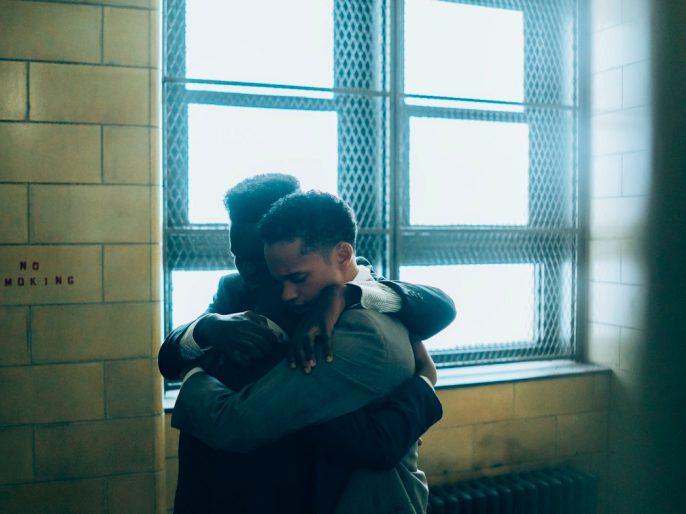On May 31, “When They See Us” became available on Netflix in 190 countries. Written, directed and produced by Ava DuVernay, the four-part miniseries details the interrogation, indictment and release of Antron McCray, 15; Kevin Richardson, 14; Yusef Salaam, 15; Raymond Santana, 14; and Korey Wise, 16.
The boys, who, besides Yusef and Korey, did not know each other prior to the arrests, were wrongfully convicted of the assault and brutal rape of a white woman who had been jogging through Central Park in New York City. The incident was later coined “the Central Park jogger case.”
In Episode 1, “When They See Us” narrates the arrest, interrogation, coercion and confession tapes of all five boys. It shows how all the boys, except Antron, were interrogated by multiple officers without a parent present.
The cops use physical violence, lie about case details, play good cop/bad cop roles, scream, bargain and promise to return each individual boy home if they cooperate. They also pin the rape on the other boys they had detained. The cops didn’t let the boys sleep or eat, some for over 14 hours, before getting their false confession. They fed them a story to fit the timeline, and then they taped it.
These confessions, made as the result of extreme physiological distress, contradicted each other and included incorrect details about the crime, including the location. Additionally, none of the boys’s DNA matched the samples found at the crime scene.
Regardless, each boy was charged with the crime he did not commit. McCray, Richardson, Santana and Salaam all served between 6 – 7 years in juvenile detention centers and then prison. Korey was sent straight to Rikers Island and served 12 years in the prison system.
In 2002, the boys, then between the ages of 27 – 29, were fully exonerated based on the recommendation by the district attorney when Matias Reyes, who was already serving time as a serial rapist and murderer, confessed to the rape, which had the same M.O. as his other crimes.
When “When They See Us” was released, it took the world by storm. The heavily publicized case once again became a part of public discussion — this time, however, it was in a different light. The Netflix miniseries puts the terrorization and abuse of the young boys on display for the world to see, and it exposes the media and police for their practice of overt racism.
The show was intended to upset and horrify audiences by revealing the grave injustice that took place. “When They See Us” highlights the overt racism in the criminal justice system and creates a platform for conversation about it. Sadly, the problem hasn’t gotten much better in the 30 years since the original case.
When Matias Reyes confessed to the crime in 2001, his DNA matched both samples found at the scene, which convinced the district attorney to recommend that the five boys be exonerated. Though this occurred a year after the confession, no real justice was ever brought to the boys, or to the original victim of the crime. Reyes could not be prosecuted when he confessed because the statute of limitations had passed.
In the same vein, the Innocence Project, founded in 1992, has been working to exonerate the innocent and reform the justice system to prevent future cases like this. However, only about half of all exoneration cases have revealed the actual perpetrator.
The organization first does extensive research on whether DNA testing can be used to free an innocent person on a case-by-case basis. Once an outcome looks promising, clinical students test a convicted person’s DNA, and their full-time staff attorneys build new cases on the basis that their DNA does not match the sample found at a crime scene.
To date, the Innocence Project has helped to free 365 innocent individuals in the United States. Of those, 69 percent involved eyewitness misidentification (of which 42 percent are cross-racial misidentification), and 28 percent involved false confessions. Half of the false confessors were 21 years of age or younger at the time of arrest, and one third of false confessors, like the exonerated five, were under 18 at the time of arrest.
With so many cases won by the Innocence project spread across 37 states, there is undeniable evidence that wrongful convictions aren’t just unfortunate and rare mishaps, but a trend brought on by systemic faults. Even knowing this, it’s hard to imagine why and how witnesses make false statements and why innocent people confess to crimes they did not commit.
The interrogation tactics used on the boys in the jogger case were not designed to be used on children; however, they were implemented anyway. The boys were robbed of their presumption of innocence in the media and in court because of the color of their skin. The one system designed to protect the citizens of the United States has failed, and is still failing black and Latinx people in terms of justice.
“When They See Us” does an excellent job of bringing this issue to the mainstream media, and the Innocence Project is fighting to change the legal system to prevent future injustices. The Strategic Litigation department has been working through the courts and the legal system since 2012 to educate judges, attorneys and policymakers and to establish legal precedent. The Policy Department also works to pass legislation within governments for many issues, including setting stricter rules about how interrogations are conducted.
Even with this considered, there is an incredible amount of progress to still be made. If you haven’t already, head to Netflix to watch “When They See Us,” and start participating in the conversation.
















